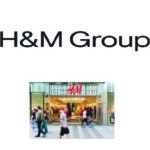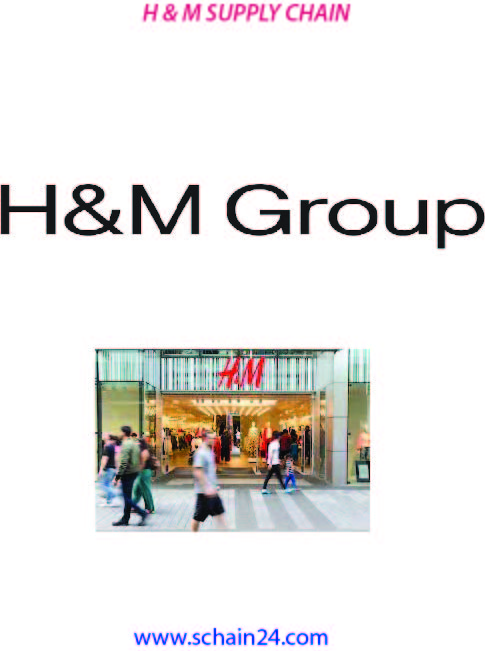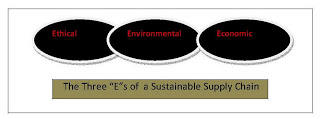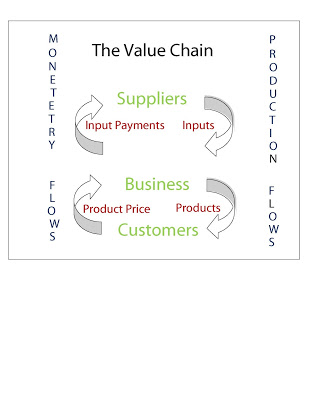Abstract
By the end of the decade, there are H&M stores in several European countries including France, where the first H&M store opens 1998 in Paris. COS is offered online in 21 markets globally and in 270 stores in 41 markets. Besides shopping online in 19 markets, customers can experience Monki in 127 stores in 16 markets. Today, H&M HOME is available mainly in shop-in-shops in H&M stores and online, and is also expanding through standalone H&M HOME stores. Successfully launched in 2013, & Other Stories is present with 70 stores in 17 markets in Europe, the US, and Asia along with an online store at stories.com in 15 markets.
Keywords: H&M stores, sustainability, supply chain.
Introduction
Hennes & Mauritz AB is a Swedish multinational clothing-retail company known for its fast-fashion clothing for men, women, teenagers, and children. As of November 2019, H&M operates in 74 countries with over 5,000 stores under the various company brands, with 126,000 full-time equivalent positions. It is the second-largest global clothing retailer, behind Spain-based Inditex (parent company of Zara). Founded by Erling Persson and run by his son Stefan Persson and Helena Helmersson, the company makes its online shopping available in 33 countries.
Highlights of H& M history
By the end of the decade, there are H&M stores in several European countries including France, where the first H&M store opens 1998 in Paris. In April 2019 H&M became the first big fashion brand in the world to provide detailed information about the factory and material for individual garments in-store and online. The first store opens on Regent Street in London as well as online at arket.com in 18 European markets. Since this first designer collaboration fashion giants like Versace, Roberto Cavalli, Alexander Wang, and Stella McCartney have been invited to make their design accessible to fashion fans globally. The 1950s closed with the opening of a flagship store in the first of five skyscrapers built in the Hötorget area in central Stockholm. Afound was launched in 2018 with the first stores in Sweden and online. The opening of the first store in the U.S. marks the start of the expansion outside Europe. 2007, marking 60 years after the first Hennes store opened, COS is born. A first store in Sweden’s capital, Stockholm, opens in 1952. The same year, ABBA-member Anni-Frid Lyngstad becomes the first “supermodel” to be photographed for the company, wearing make-up from the new cosmetics range.

Sustainable supply chain
Sustainability is significantly important for fashion businesses due to consumers’ increasing awareness of the environment. When a fashion company aims to promote sustainability, the main linkage is to develop a sustainable supply chain. H&M’s sourcing managers are more likely to select suppliers in countries with lower degrees of human wellbeing. The H&M’s supply chain manager also set a higher level of inventory in a country with higher human wellbeing, and the H&M CEO consider the degrees of human wellbeing and economic wellbeing when considering shopping channel in the country. We observe that H&M has implemented a sustainable program, conscious action, in which eco-material is used and promoted, the sustainable manufacturing manner in countries with a high sustainable consciousness is adopted, green distribution approaches with fewer emissions and energy use are used, and green retailing and educating consumers are promoted.
H & M Brands are ARKET, Weekday, COS, Monki, & Other Stories, Afound
-Arket is a modern-day market offering essential products for men, women, children, and the home. ARKET’s mission is to democratize quality through widely accessible, well-made, durable products, designed to be used and loved for a long time. ARKET opened its first store on Regent Street, London in August 2017 as well as online in 18 European markets. Today ARKET has 16 stores in the UK, Sweden, Germany, Denmark, Belgium, and the Netherlands. The head office and design studio are located at Maria Skolgata 83 in Stockholm.
-Weekday is a Swedish denim and fashion brand influenced by youth culture and street style. Founded in 2002, Weekday currently ships to 18 markets and has 38 stores in 10 countries, offering a unique retail experience and a curated mix of women’s and men’s assortments as well as a small selection of external brands. Weekday has been part of the H&M Group since 2008.
-COS offers reinvented classics and wardrobe essentials for women, men and children. Designed to live beyond the season, the collections merge lasting quality with timeless design. Committed to supporting the world of art and design through collaboration, COS partners with established and emerging artists, studios, and galleries globally, creating unique brand projects alongside the seasonal fashion collections. In 2018, COS presented Soma, a seasonless capsule menswear collection, through choreography by Wayne McGregor during the Pitti Uomo event in Florence. COS’ expansion continued in 2018, with its first stores in Russia and, via franchise, in Thailand, Lebanon, and Saudi Arabia. COS also opened online in China, where the brand was very well received on the e-commerce platform Tmall. COS is offered online in 21 globally and in 270 stores in 41 markets.
-Monki is a storytelling brand that offers great fashion at competitive prices, aiming to be kind to the world and the people in it. The brand mixes Scandinavian cool with creative street style and is all about being brave, friendly, and fun while empowering young women to stand up for themselves — and others. Besides shopping online in 19 markets, customers can experience Monki in 127 stores in 16 markets.
-H&M HOME is a design-driven interior brand, offering fashion-forward decor and accessories for every room and style. The assortment ranges from high-quality bed linen and timeless dinnerware to stylish textiles, furniture, and lamps; with contemporary style and attention to detail at its core. By merging modern design and quality with affordable prices, H&M HOME enables interior lovers across the world to create their dream homes. H&M HOME was launched online as a home textile concept in 2009. The assortment has been extended throughout the years and rolled out in many markets. Today, H&M HOME is available mainly in shop-in-shops in H&M stores and online, and is also expanding through standalone H&M HOME stores.
-& Other Stories offers a wide range of shoes, bags, accessories, beauty products, stationery, and ready-to-wear for women. In design ateliers in Paris, Stockholm, and Los Angeles, & Other Stories create collections with great attention to detail and quality. Successfully launched in 2013, & Other Stories is present with 70 stores in 17 markets in Europe, the US, and Asia along with an online store at stories.com in 15 markets. In 2018 & Other Stories launched a new product category – hair care, inspired by Los Angeles. New markets were Kuwait via franchise and Austria.
-Afound is a new type of outlet that offers hundreds of well-known fashion and lifestyle brands for women, men, and kids — always at a reduced price. With physical stores and a digital marketplace, Afound presents a hand-picked and curated assortment in many price segments to suit your personal style. Afound was launched in June 2018, with its first store in Stockholm and online in Sweden. During the year, four more stores opened in four Swedish cities.
H & M use ICT in their operations
H&M has around 4000+ stores throughout the world. Whether you go to Sweden, Spain, and India, you’ll find similar merchandise in every store of H&M. Sometimes this does not go well with the taste of customers since the company fails in studying the latest trend of fashion and ultimately it results in mass production. Mass production forces retailers to cut down the price of some products. In order to fulfill customers’ demands based on their cultural background; H&M came up with an effort to better individual stock stores. H&M is integrating AI and Big data to get the trust of their existing customers by introducing Loyalty card data, analyzing returns, marinating the memo and receipts of the same. Through these ways, H&M is able to tailor its merchandise for each store (Marr, 2016).
Automated Warehouses
Apparently, H&M is using EPC (Electronic product code) in the form of RFID as a tool to identify the data and location of any product kept in a warehouse. A particular product has a unique digital price tag which helps a firm in finding out its location quickly and efficiently. RFID helps retailers in finding out the past 2 years’ stocks units to weekly or even to daily stock counts. RFID helps H&M in conducting correct demand forecasting, which in turn, leads to higher profitability. The RFID tags can be used anywhere in the world which makes it valuable for any firm. Also, through RFID technology H&M is able to connect with customers in the best possible way. They are making it easier for customers by working on a better online-offline shopping experience. For instance: The find a store feature helps the customers in finding out whether a product is available in offline H&M stores or through scanning an in-store label, customers can see whether a product is available in other online/offline stores or not.
Data Matrix
H&M has recently come up with a 2D barcode that looks like a pixelated rectangle. These barcodes stores a significant amount of data. It carries both numbers and letters. Altogether it can store up to 2335 characters’ limits. Basically, the data matrix shows the supply chain data such as batch numbers, product certification, which helps in tracing the small products. H&M also uses this tool in camera scanners to read at POS. Data matrix also includes URL which means it can be used to support online digital service offers.
Coded Couture App
Google and H&M together came up with the coded couture app which is a part of H&M’s fashion designing house Ivyrevel. This app helps a customer in finding an appropriate dress he/she wants to wear for an occasion or for any casual event, hassle-free. Here Android’s awareness API will check on user’s daily routine like where they prefer to eat, what’s the weather condition in their locality, whether they have to attend a formal or casual meeting, is it for a birthday or marriage event, etc. all this vital information is passed through a channel or algorithm to the app which tailors the outlook of the dress to their customers that fits them the best.
H&M group’s Monki has collaborated with Home
To make the customers experience with high definition Human Holograms virtual reality. This will be experienced through both smartphones and tablets with not much data usage. Here, the app will showcase 9 Hologram with different outfits to the users which will allow users to observe keenly and let them decide with what distinctive look they should go for this 3D effect of apparel will make the customers believe that the holograms are standing in front of them and giving them a virtual experience, therefore, inspiring the customers to shop wisely.
H&M’s home stylist has collaborated with Google
Through the help of google, assistant customers can ask to connect them with H&M Home Stylist which will suggest the latest styling advice, mood board, nearby shops, and retailers to the customers. This technology would be the first voice application app to be introduced within the fashion industry. The app will also provide a choice of preferable voices, whether you want an exclusive human male or female voice to be able to articulate the communication in an effective manner making shopping easier than ever before.
Using Blockchain technology
H&M’s subsidiary Arket has confirmed that they are going to test some new products through blockchain technology. Here Arket can trace the data of the product and make it sure that data does not get leaked outside. Blockchain is a trusted tool for H&M to keep their data secured. Each block in a blockchain is put in such a manner that they are stored in linearly and in chronological order since they are added to the end of a blockchain. Each block has a unique hash code which is made through the math function. Hash code keeps transforming digital information in the form of numbers and letters. This is one of the technologies that H&M is looking forward to integrating with its supply chain to yield some benefits out of it such as eliminating the risk of forgery and errors, reducing courier cost, identification of any issues quickly, building consumer and its partner’s trust, minimizing delays in paper works and resulting in advance inventory management.
Conclusion
H & M and its various brands such as H & M Brands are ARKET, Weekday, COS, Monki, & Other Stories, Afound is following a sustainable supply chain policy. They are using information technology to a great extent. Market, an H& M brand testing blockchain technology also. In the case of human rights policy, they do not like to work with those countries and areas where human rights are violated.
Reference:
- Rathore, Manvinder Singh. Maheshwari, Kriti. Shreyans Jain, Shreyans.(2019). “Fast Moving H&M: An Analysis of Supply”. School of Business Studies and Social Sciences, Christ University, Karnataka, India. Vol-5 Issue-4 2019.
- Shen, Bin. (2014). “Sustainable Fashion Supply Chain: Lessons from H&M”. Glorious Sun School of Business and Management, Donghua University, Shanghai 200051, China.
- https://youtu.be/vken2eiLzMQ





